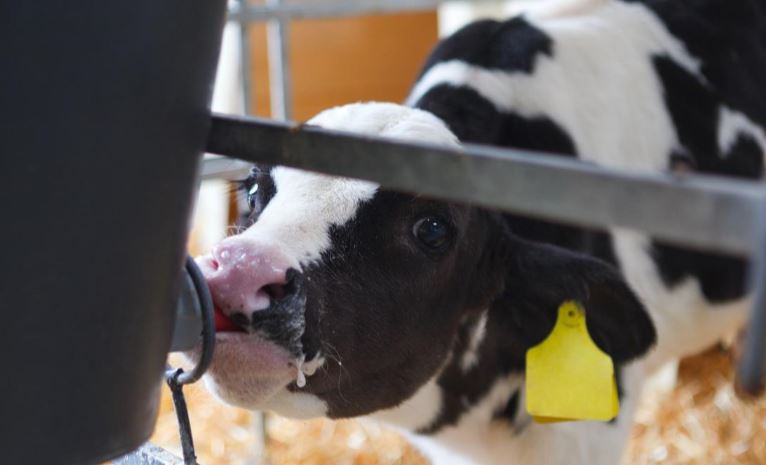Scientific research by a leading milk replacer company has led to a significant breakthrough in early calf nutrition.
This research has resulted in the launch of a feeding system that delivers the performance benefits of transition cow milk without the risk of Johne’s disease.
While Teagasc is of the view that transition milk may help where there is a high risk of scour, it should only be fed to beef calves or where the Johne’s status of the cow is known.
The importance of transition milk
Transition milk is the milk produced by the cow in the first few days after calving and it’s higher in antibodies and energy than cows’ milk.
Transition milk contains important antibodies and its removal as the main feed source for calves in the first 14 days has created a major nutrition gap.
Bonanza Calf Nutrition’s Joe Murphy said: “The value that transition milk has in the first two weeks of the calf’s life is evident just by comparing baby bull calves and heifers on the same farm.
The bull calves on transition milk look better than the heifers on calf milk.
This is because calves that are introduced to milk replacer immediately after colostrum miss out on those antibodies and this can compromise their performance.
A product to plug that gap
Following extensive research, Bonanza Calf Nutrition has developed a unique product to plug that gap – Transformula.
Joe calculates that feeding Transformula will cost €14-15/calf – a net cost of €5 over standard milk replacers.
It has been shown to vastly improve calf growth rates during and after feeding. The benefits of colostrum are a given and feeding 4L of good-quality colostrum in the first two hours of a calf’s life is key to future health and performance.
“But, increasingly there is a realisation that this is not the full story. The surface of the small intestine is like an external skin and it has to withstand the physical and chemical abrasion of food digestion and the continuous attack of pathogenic organisms.
“The cells of the small intestine are replaced by new cells within a few days of birth and the surface antibodies from colostrum, at this stage, are rapidly depleting leaving these new cells vulnerable to attack.’’
Transition milk contains a surface antibody that can replace the colostrum antibody and this will remain in the small intestine to help maintain calf intestinal health.
“In order to protect calves against rotavirus, farmers are vaccinating cows to increase the level of antibodies in colostrum. However, this will only be partially effective unless colostrum or transition milk is continued to be fed for at least seven-to-14 days.
“Because of Johne’s disease and practical issues on many farms, calves only get one or two feeds of colostrum at most before going on to milk replacer,” he said.
Key facts about Transformula
Transformula contains beneficial probiotic bacteria that compete with pathogens in the small intestine.
“Transformula is designed for use after colostrum feeding. It is made with over 60% skim milk and buttermilk, along with five plant oils and whey protein so that it is easily digested by the baby calf.
“Because it is dried under low temperatures, it ensures the baby calf is not exposed to high bacterial counts found in stored, raw cows’ milk,” he said.
Transformula also contains Krypto-nite, which is a plant extract used by farmers – at high levels – in milk replacer when they encounter cryptosporridia. Egg protein from hens immunised against bovine E-coli, rotavirus and salmonella is also added.
More information
For further information contact Bonanza Calf Nutrition at: 042-9336001 or email at: [email protected]. Click here for more information




